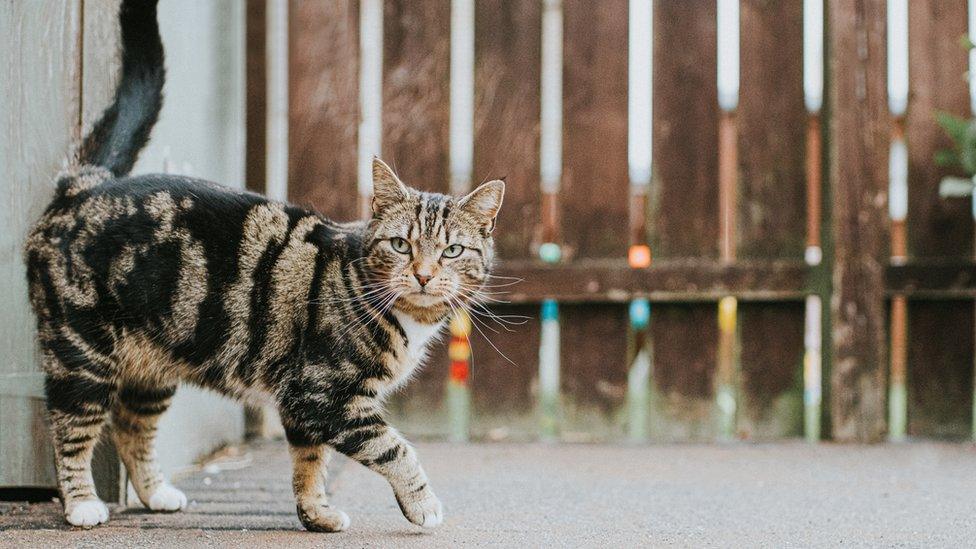How did tabby cats get their stripes? It's all in their genes!
- Published
- comments

Not just a family pet! Scientists wanted to know how the tabby cat got its famous stripes
Have you ever wondered why tigers have stripes? Or how cheetahs and leopards got their spots?
Well now you don't have to because a team of scientists in the US are working on just that.
Scientists at HudsonAlpha Institute for Biotechnology in Alabama studied the skin of cats before they were born.
They discovered that the reason why cats have different patterns and colours is because of a specific gene called DKK4.
Genes carry the information that determines your features and characteristics (who you are and what you look like) that are passed on from your parents.
For example if you have straight or curly or hair, if you are tall or short.
They are so tiny you can't see them and each cell in the human body contains about 25,000 to 35,000 genes.
Genes aren't just found in humans — all animals and plants have genes, too.
How did they find the gene?

The tabby's distinctive markings have baffled scientists for decades
By studying the skin the scientists noticed it was divided into alternating thick and thin regions, which they later discovered matched patterns of hair follicles that produce different colours of fur on a tabby cat.
Then they needed to work out what was responsible for making the thick and thin regions in the first place.
So they studied tabby cats' genes and found that the thick and thin skin was caused by a specific gene called Dickkopf, or DKK4.
The way this gene acts for each cat is what gives them their individual and distinct markings - it dictates the different shapes on each cat's fur.
It's big news because it means scientists can now learn more about how other animals like tigers, giraffes and zebras got their markings.
"We think this is really the first glimpse into what the molecules (involved in pattern development) might be," Dr. Gregory S. Barsh, one of the report's authors, told The New York Times.
- Published23 April 2019

- Published18 October 2020
- Published31 May 2023

